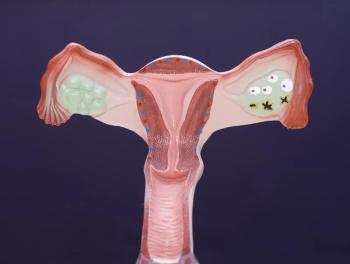
Are Simple Cysts Found on Ultrasound Exams Linked to Ovarian Cancer?
This study was the first in a large, unselected population to assess ovarian mass appearance and the connection to ovarian cancer risk.
A large case-control study found that ultrasonographic appearance of ovarian masses is significantly associated with the risk of ovarian cancer. The presence of simple cysts was not associated with any increased risk, while complex cysts and solid masses are correlated with a higher risk of cancer.
“Increased use of transvaginal pelvic ultrasonography has led to the frequent identification of ovarian masses,” wrote study authors led by
The new study was the first in a large, unselected population to assess ovarian mass appearance and the connection to ovarian cancer risk. It was a nested case-control study of patients enrolled in Kaiser Permanente Washington, a large healthcare system in Washington State, and included a total of 72,093 women who underwent pelvic ultrasonography examinations over a 10-year period. The results were
A total of 210 women were subsequently diagnosed with ovarian cancer. In the full cohort, 75.5% of women were younger than 50 years, while 76.7% of those with ovarian cancer were 50 years and older. The diagnosis of ovarian cancer occurred a mean of 3.4 months following the first ultrasonography.
Simple cysts were the most common ovarian finding, occurring in 23.8% of the cohort aged younger than 50 years and in 13.4% of those aged 50 years and older. Among the 15,306 women with a simple cyst, only one woman was subsequently diagnosed with ovarian cancer within 3 years; this results in a likelihood ratio of an ovarian cancer diagnosis after a simple cyst of 0.06 (95% CI, 0.01–0.48).
Among women diagnosed with ovarian cancer, the most common finding was a complex cystic mass; this was found in 31 of 49 women (63.3%) younger than 50 years, and in 90 of 161 women (55.9%) 50 years and older. Finding a complex cystic mass on ultrasonography raised the risk of ovarian cancer significantly in both women younger than 50 years, with a likelihood ratio of 8.20 (95% CI, 4.21–15.90), and in those 50 years and older, with a likelihood ratio of 7.60 (95% CI, 5.00–11.59).
Solid masses occurred in 10.2% of those with ovarian cancer younger than 50 years, and in 7.5% of those 50 years and older. Again, the finding of a solid mass was associated with increased risk of ovarian cancer, with a likelihood ratio of 8.08 (95% CI, 1.86–36.12) in younger women and of 10.08 (95% CI, 3.25–31.21) in older women.
On a multivariable analysis, ultrasonography findings were significant predictors of cancer (C statistic, 0.89), and both complex cysts and solid masses were associated with increased risk. Women with normal ovaries, with simple cysts, and with cysts with low-level echoes were all not associated with any increased risk.
In an accompanying editorial,
“The results ... add to the growing literature that asymptomatic simple cysts may be safely ignored, regardless of size and regardless of patient age,” Levine wrote. “With confident diagnosis of simple cysts, clinicians can be reassured that the likelihood of cancer is similar to that of patients without cysts, and management can be based on patient symptoms rather than on a benign incidental pelvic ultrasonographic finding.”
Newsletter
Stay up to date on recent advances in the multidisciplinary approach to cancer.
































































































